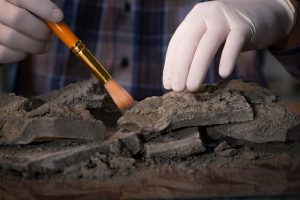Radiocarbon Dating:

Archaeologists have recently used radiocarbon dating to analyse the oldest true wooden frame saddle in East Asia, revealing how the rise of Mongolian steppe cultures was likely aided by advances in equestrian technology.
- Radiocarbon dating, or carbon-14 dating, is a scientific method that can accurately determine the age of organic materials as old as approximately 60,000 years.
- First developed in the late 1940s at the University of Chicago by Willard Libby, the technique is based on the decay of the carbon-14 isotope
- Carbon-14 is a radioactive isotope of carbon.
- It has been used for historical studies and atmospheric science.
- It can be used on any object that used to be alive.
- That includes pieces of animals, people, and plants, but also paper that was made from reeds, leather made from animal hides, logs that were used to build houses, and so forth.
- Carbon 14 is continually being formed in the upper atmosphere by the effect of cosmic ray neutrons on nitrogen 14 atoms. It is rapidly oxidized in air to form carbon dioxide and enters the global carbon cycle.
- Plants and animals assimilate carbon 14from carbon dioxide throughout their lifetimes into their tissues.
- When they die, the carbon-14 starts to change into other atoms over time.
- Scientists can estimate how long the organism has been dead by counting the remaining carbon-14 atoms.
- Carbon-14 has a half-life of about 5,730 years.
- That means half the atoms in a sample will change into other atoms, a process known as “decay,” in that amount of time.




